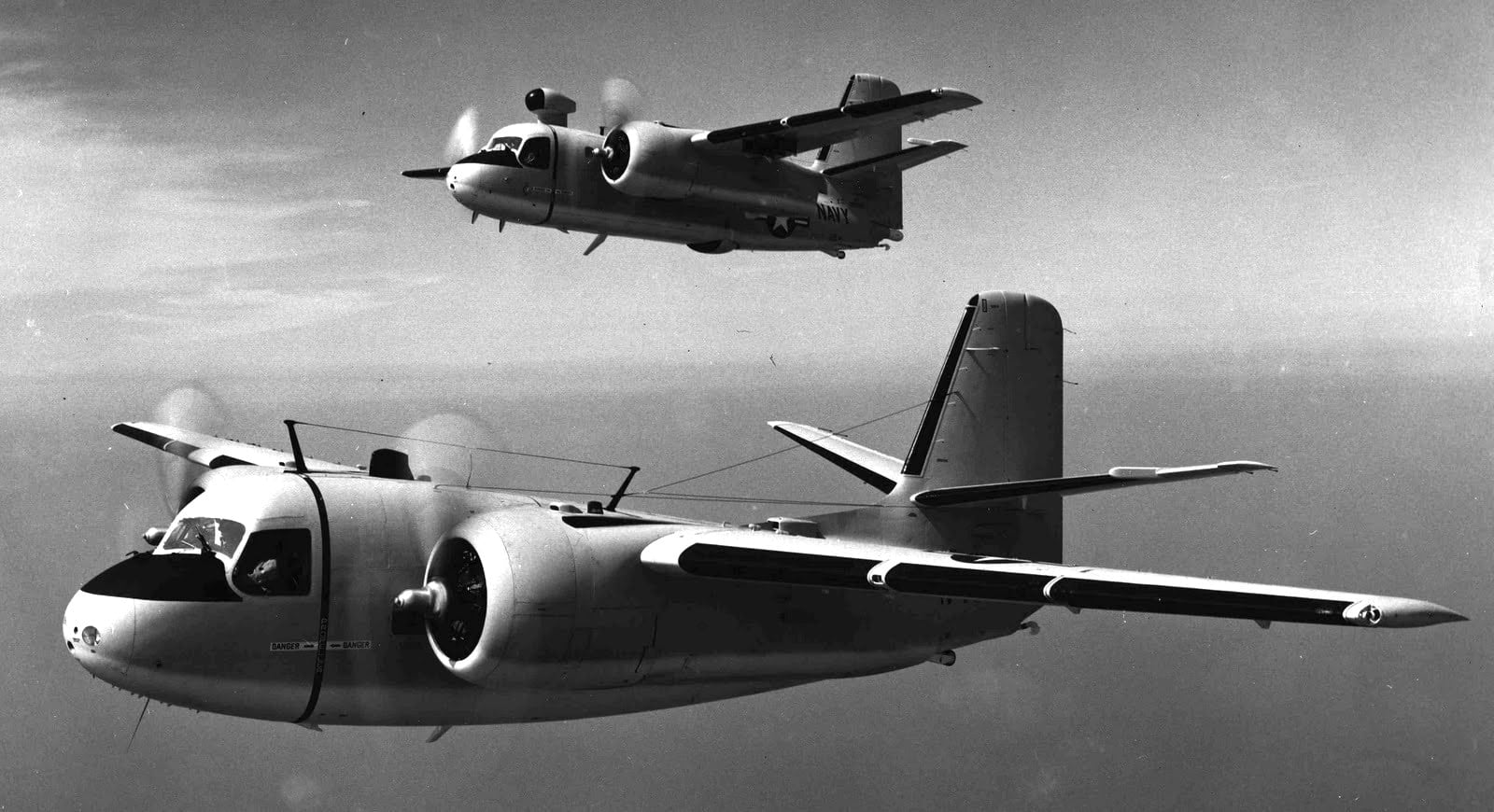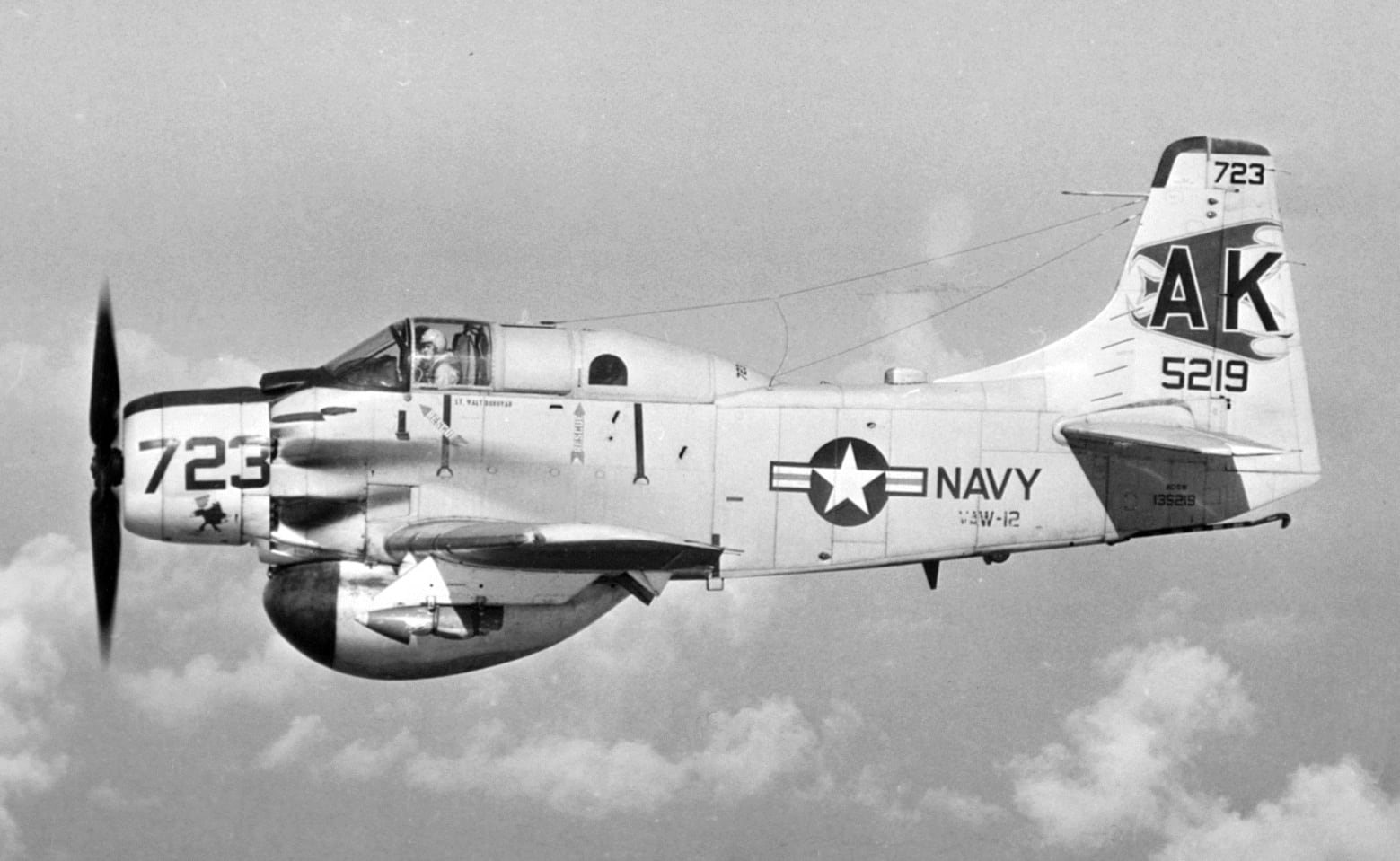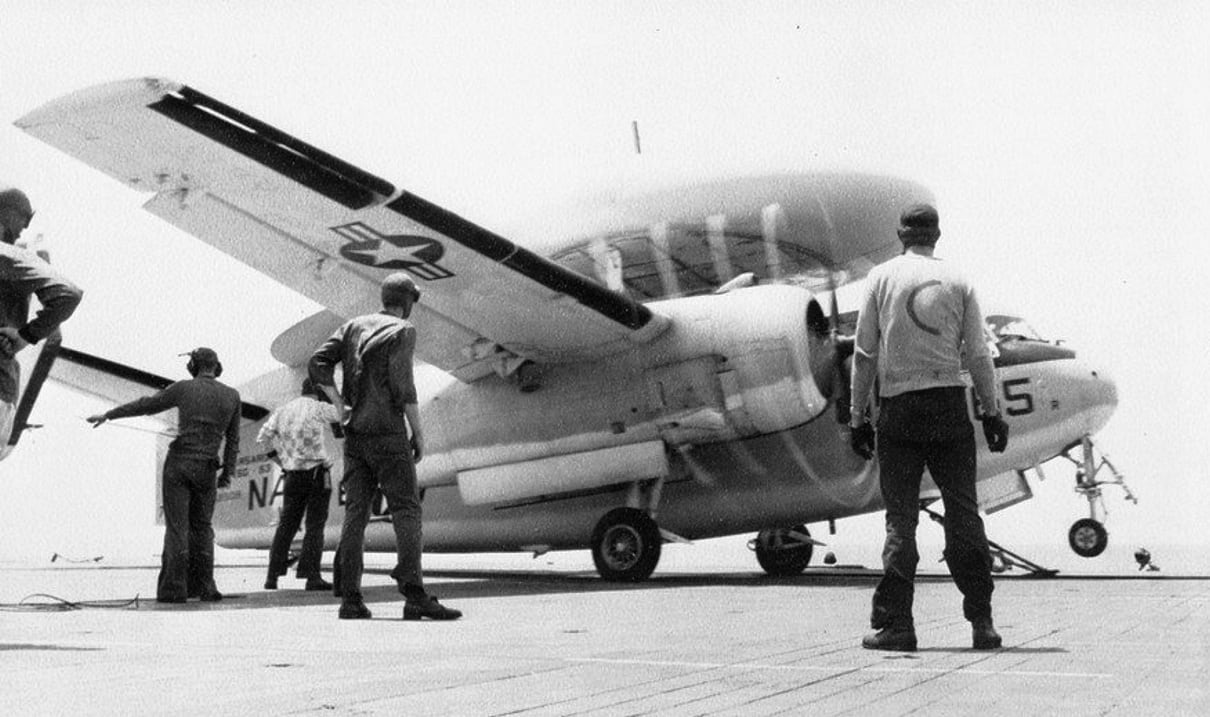The WF-2/E-1B Finally Addressed a Need Defined During the Days of the Kamikaze
When the Grumman Tracer entered operational US Navy service with Carrier Airborne Early Warning Squadron ONE ONE (VAW-11) Early Elevens in 1958 at Naval Air Station (NAS) North Island, the aircraft was designated WF-2. The WF designation quickly branded the aircraft with the nickname Willy Fudd. The WF-2 was the third member of the Grumman family of radial engine-powered propeller-driven carrier-based workhorses along with the S2F (later S-2A) Tracker antisubmarine warfare aircraft and the TF-1 (later C-1A) Trader carrier onboard delivery variant.

Project Cadillac Yields Replacement for Queer SPADs
Ever since the rise of kamikaze attacks during World War II the fleet needed a dedicated airborne early warning/air intercept control (AEW/AIC) aircraft. Project Cadillac was the effort to develop this capability for the fleet. The first type to be fitted with an airborne radar for this purpose was Grumman’s TBM-3W Avenger. After the war the Grumman AF-2W Guardian was the next fleet AEW aircraft. The tremendously flexible Douglas AD Skyraider was modified to carry the same Hazeltine Corporation AN/APS-20 radar system and designated AD-3W, AD-4W, or AD-5W depending on additional modifications. Because these variants were all equipped with the AN/APS-20 radar, they lacked effectiveness.

If At First You Don’t Succeed…
The first iteration of what would eventually become the Tracer was essentially a Grumman S2F Tracker with a large pylon-mounted radome mounted over the cockpit containing the AN/APS-20 radar. The placement of the radome allowed the aircraft’s wings to fold the same way as the wings of the Tracker and Trader– over the fuselage more or less parallel with the inner wings. But the Navy Bureau of Aeronautics (BuAer) realized that any new aircraft design equipped with the AN/APS-20 would just not be capable of doing what the Navy needed the aircraft to do and cancelled the proposal in 1951.

Building a Better But Still Huge Scanner
In 1955 Hazeltine came up with an improved AN/APS-20 designated the AN/APS-82. Though better in just about every way than their previous airborne radar, the AN/APS-82 required a massive scanning antenna. Grumman went back to the drawing board and came up with a modified C-1A Trader with an aerodynamically neutral faired radome mounted on top of the fuselage that provided lift to partially compensate for its added weight. To adapt folding wings for the new design Grumman went back to their World War II-vintage Sto-Wing folding wing design first used on the F4F Wildcat and later the TBF Avenger and F6F Hellcat.

Tracker, Trader, and Tracer Family Traits
Other than the huge antenna fairing, the WF-2 looked a lot like the Tracker and Trader and shared many of their systems, including the same pair of Wright R-1820-82A Cyclone 9-cylinder radial piston engines putting out 1,525 horsepower each, cockpit layout, landing gear, wings (except for the folding mechanism), and internal flexibility to allow the crew of two systems operators to work in the fuselage just aft of the cockpit.
The WF-2 fuselage received an 18 inch “plug” ahead of the wing to increase internal volume for mission equipment and avionics. The empennage was modified to an H configuration with twin vertical stabilizers and rudders. This allowed the aft attachment point for the radome fairing to mount at the base of an abbreviated Trader vertical stabilizer.

Perfect Nicknames for a New Kind of Aircraft
An aerodynamic test airframe was modified from TF-1 Trader number 45 (BuNo 136792) and took to the skies on 17 December 1956. After flight testing concluded, the 32 foot by 20 foot oval radome fairing was removed but the airframe retained the Tracer empennage configuration-making this one unique Trader. The prototype WF-2 Tracer flew for the first time on 1 March 1958. In fleet use the aircraft picked up a couple of other nicknames: Flying Turtle and Stoof with a Roof. The radar scanner was 17 and one half feet wide and rotated inside the radome fairing 6 times per minute.

